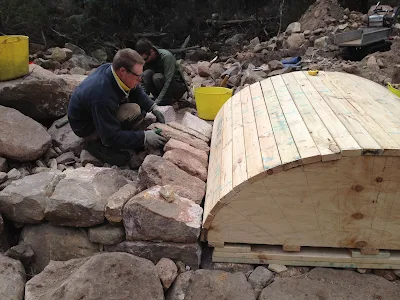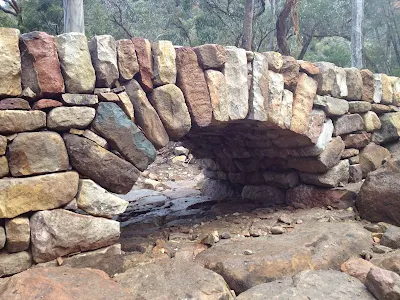With the former in place between the two arch footings, work could commence on constructing the six foot span arch barrel. The first step was to collect sandstone from the surrounding area with a mechanised wheel barrow and shape it into voussoirs with tools such as a bull set, slab splitter and hammer point. Once enough voussoirs had been found, we began laying them on the former. With the barrel complete we then built the spandrels and approaches. This was followed by the fitting of large coping stones which served to contain the pitching stones layed in between. The pitching formed a durable tread as well as strengthening the rest of the bridge. The structure was built to stand up to future floods and in theory should be able to cope with being completely inundated.
The bridge took a month to build and used about forty tons of stone. This was the first bridge project I supervised without the help of other experienced wallers and also, to my knowledge, the first drystone bridge to be built in a Victorian national park. I would like to take this opportunity to thank those that have taught me the art of bridge building over the years and in particular John Shaw-Rimmington and Patrick McAfee, as this project would not have been possible without their willingness to share their skills and knowledge.






